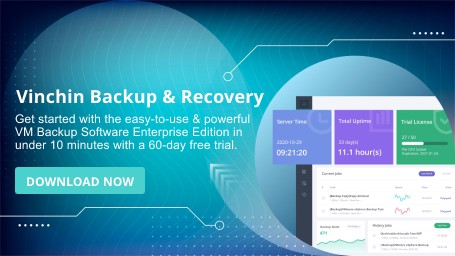-
Life Health Insurance Data Characteristics
-
Life Health Insurance Backup Challenges
-
Common Backup Methods in Life Health Insurance
-
Vinchin’s Data Protection Solution for Life Health Insurance
-
Life Health Insurance Data Backup FAQs
-
Conclusion
A reliable life health insurance data backup solution is now essential for every insurer. The life and health insurance industry handles vast amounts of sensitive data, from policy details to medical records. With rising cyber threats and strict regulations, data loss is not just a technical issue—it can disrupt business, harm customers, and lead to heavy penalties. This article explores the unique data landscape in life and health insurance, the main backup challenges, common backup methods, and how a modern solution like Vinchin can help.
Life Health Insurance Data Characteristics
Data in the life and health insurance sector is growing at an unprecedented rate. Digital transformation, online customer portals, and automated claims processing all contribute to this surge. Insurers now manage terabytes or even petabytes of information, and the volume keeps rising.
Several core systems generate this data. Policy management applications track every policy from creation to renewal. Claims processing platforms handle everything from initial submission to final payout. Customer portals allow policyholders to view and update their information, submit claims, and communicate with agents. Each of these systems produces both structured data (like databases and spreadsheets) and unstructured data (such as scanned documents, emails, and images).
What makes this data unique? First, its sensitivity. Life and health insurers store personal details, medical histories, financial records, and even biometric data. Protecting this information is not just good practice—it is required by law. Second, retention periods are often dictated by regulations. Some records must be kept for years or even decades, making long-term storage and accessibility a must. Finally, the data comes in many formats, from standard database entries to PDFs, images, and audio files. This diversity adds complexity to backup and recovery.
Life Health Insurance Backup Challenges
Implementing a robust life health insurance data backup solution is not without obstacles. One major technical challenge is integrating legacy systems with modern backup tools. Many insurers still rely on older applications that may not support current backup standards. Another operational challenge is the sheer scale of daily data changes. With thousands of transactions and updates each day, backups must be frequent and efficient to avoid data loss.
Compliance and regulatory requirements add another layer of complexity. Laws like HIPAA in the United States and GDPR in Europe set strict rules for data protection, privacy, and retention. Insurers must ensure that their life health insurance data backup solution meets these standards or risk fines and reputational damage. Data sensitivity means that even a minor breach can have serious consequences for both customers and the business.
Cybersecurity threats are also on the rise. Ransomware attacks, accidental deletions, and insider threats can all lead to data loss or corruption. Insurers must have a life health insurance data backup solution that not only protects against these risks but also enables fast recovery when incidents occur.
Common Backup Methods in Life Health Insurance
To address these challenges, insurers use several backup strategies. The most basic is the Full backup, which creates a complete copy of all data at a specific point in time. While thorough, this method can be slow and resource-intensive—especially for large datasets.
To save time and storage space, many organizations use Incremental backups, which only copy changed data since the last backup—making daily or even hourly backups more practical.
Cloud-based backups are increasingly popular because they offer offsite storage options with scalability plus easy access from anywhere; they also help with disaster recovery since you can restore your system if local infrastructure fails.
For long-term retention needs some insurers still rely on Tape archiving, which remains durable—and cost-effective—for storing large volumes rarely accessed but required by regulation.
Each method has strengths; many insurers combine them for speed cost savings compliance balance.
Vinchin’s Data Protection Solution for Life Health Insurance
Vinchin has already delivered data protection solutions to numerous enterprises in the life health insurance industry worldwide. Vinchin supports over 19 virtualization environments—including VMware®, Hyper-V®, Proxmox®, plus physical servers; it also protects databases as well as both on-premises or cloud file storage—meeting diverse IT architecture needs typical in insurance companies.
If you need migration capabilities, Vinchin Backup & Recovery offers some of the most flexible options available: you can easily migrate full business workloads across any supported virtual machine (VM), physical server or cloud host—with minimal effort.
For critical workloads running on VMs or physical machines, Vinchin provides real-time backup & replication features. These deliver extra recovery points while automated failover reduces both RPO (Recovery Point Objective) & RTO (Recovery Time Objective).
To ensure reliability, Vinchin performs automatic integrity checks on all backups & validates recoverability within isolated environments—so you know your workloads will restore when needed. Vinchin helps build highly resilient disaster-recovery systems through automated retention policies, data archiving/backups-to-cloud, and remote replicas/DR centers—all ensuring rapid restoration after incidents.
With its simple, intuitive B/S web console & wizard-driven workflows, you’ll quickly create jobs—even without deep technical skills. A free 60-day trial lets you test Vinchin Backup & Recovery. Comprehensive documentation plus patient support engineers make deployment easy—so you protect your vital insurance business efficiently.
Life Health Insurance Data Backup FAQs
Q1: How often should life and health insurance companies back up their data?
Backups should be performed at least daily, but more frequent backups may be needed for critical systems or high transaction volumes.
Q2: What regulations must a life health insurance data backup solution comply with?
Solutions must meet standards like HIPAA, GDPR, and other local laws depending on where your company operates.
Q3: Can cloud-based backups meet needs of life/health insurers?
Yes. Cloud-based backups offer scalability offsite protection compliance features suitable for sensitive regulated insurance datasets.
Conclusion
Choosing the right life health insurance data backup solution is vital for protecting sensitive information meeting regulations ensuring business continuity. Vinchin stands out as a trusted provider offering flexible secure easy-to-use solutions tailored specifically for today's demanding insurance industry needs.
Share on:






